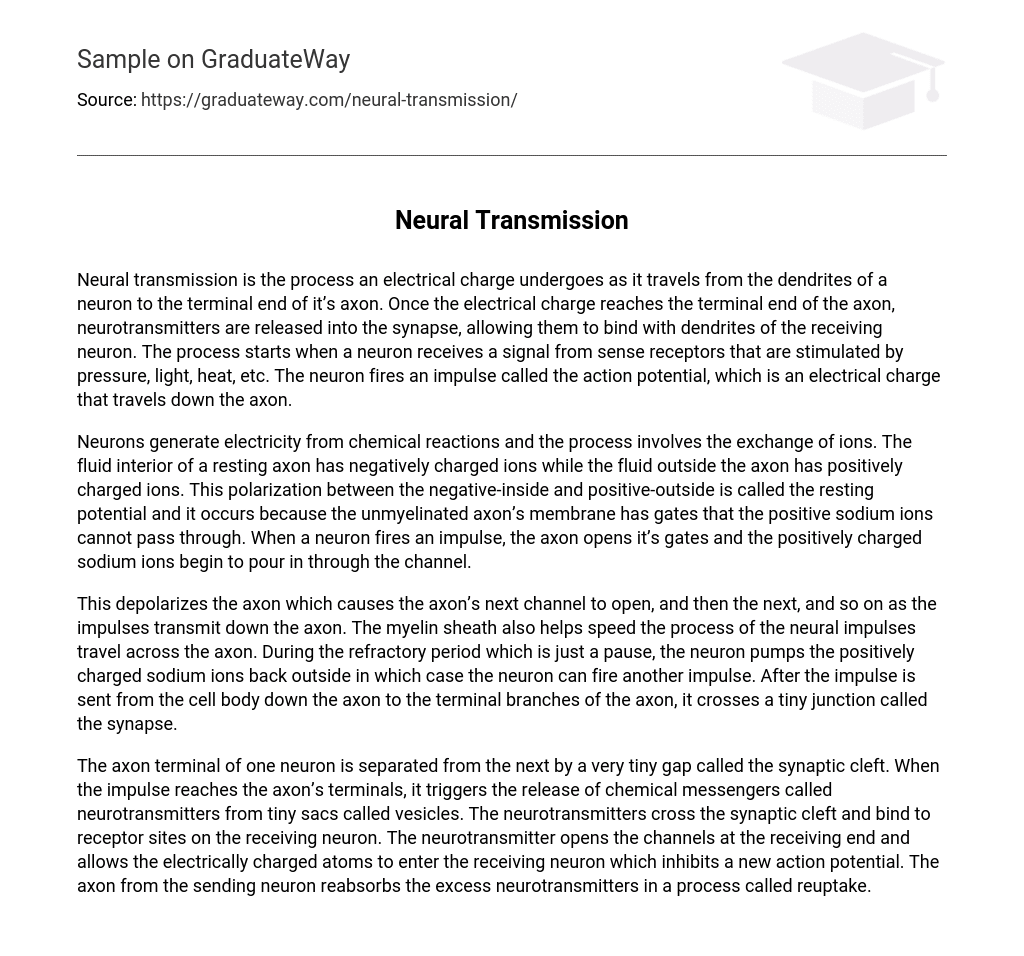Neural transmission is the process an electrical charge undergoes as it travels from the dendrites of a neuron to the terminal end of it’s axon. Once the electrical charge reaches the terminal end of the axon, neurotransmitters are released into the synapse, allowing them to bind with dendrites of the receiving neuron. The process starts when a neuron receives a signal from sense receptors that are stimulated by pressure, light, heat, etc. The neuron fires an impulse called the action potential, which is an electrical charge that travels down the axon.
Neurons generate electricity from chemical reactions and the process involves the exchange of ions. The fluid interior of a resting axon has negatively charged ions while the fluid outside the axon has positively charged ions. This polarization between the negative-inside and positive-outside is called the resting potential and it occurs because the unmyelinated axon’s membrane has gates that the positive sodium ions cannot pass through. When a neuron fires an impulse, the axon opens it’s gates and the positively charged sodium ions begin to pour in through the channel.
This depolarizes the axon which causes the axon’s next channel to open, and then the next, and so on as the impulses transmit down the axon. The myelin sheath also helps speed the process of the neural impulses travel across the axon. During the refractory period which is just a pause, the neuron pumps the positively charged sodium ions back outside in which case the neuron can fire another impulse. After the impulse is sent from the cell body down the axon to the terminal branches of the axon, it crosses a tiny junction called the synapse.
The axon terminal of one neuron is separated from the next by a very tiny gap called the synaptic cleft. When the impulse reaches the axon’s terminals, it triggers the release of chemical messengers called neurotransmitters from tiny sacs called vesicles. The neurotransmitters cross the synaptic cleft and bind to receptor sites on the receiving neuron. The neurotransmitter opens the channels at the receiving end and allows the electrically charged atoms to enter the receiving neuron which inhibits a new action potential. The axon from the sending neuron reabsorbs the excess neurotransmitters in a process called reuptake.





